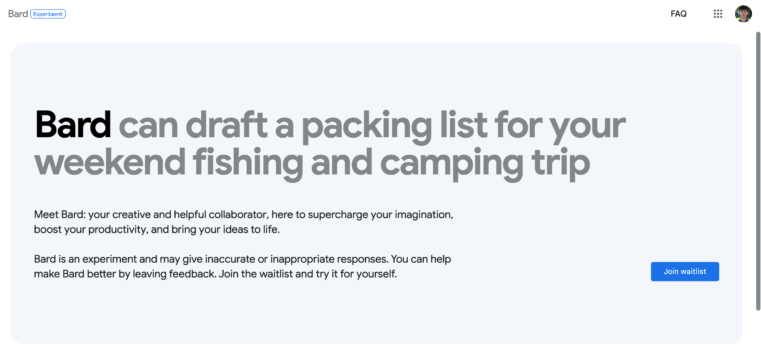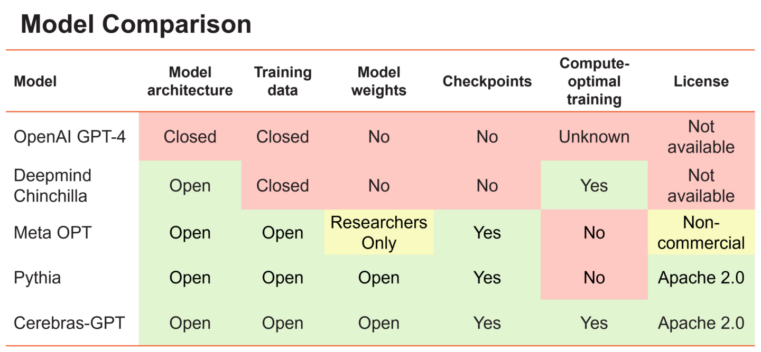Google is taking steps to amplify the search experience by incorporating conversational AI techniques. Specifically, the search giant is implementing large language models (LLMs) to boost its search engine’s ability to recognize and respond to user queries in a more conversational and natural style.
“Will people be able to ask questions to Google and engage with LLMs in the context of search? Absolutely,” said Sundar Pichai, Google’s CEO, in an interview with The Wall Street Journal.
Large language models are sophisticated computations that allow machines to understand the nuances and intricacies of natural language to generate responses. While the exact release date for the conversational AI feature in Google’s search engine remains unclear, Pichai affirmed they plan to roll out this upgrade soon.
So, why the big move? And what does this mean for SEO? Let’s discuss.
The Bi(n)g Problem…
Here’s the thing: Google will not sit back as Bing snags some market share away from them. With the integration of ChatGPT into Bing Search, users now converse with Bing and ask follow-up questions, just like how you would talk with a friend.
Because of this, Bing recently grew in search engine market share, with page visits to Bing increasing to 15.8%. In contrast, Google has seen a 1% dip as of March 20, 2023.
This trend is concerning for Google since its primary source of revenue is search ads, which generated $162 billion in 2022. And for every percentage point Bing gains, Microsoft expects $2 billion in additional revenue. There are signs that traffic from Bing has increased for certain brands and publishers. This is significant because it means we may not have to rely on Google traffic as much as we used to.
The public release of ChatGPT by OpenAI, a Microsoft-backed startup, has raised the bar for conversational AI technology. While not that late to the game, Google’s own artificial intelligence chatbot, Bard, aims to take on ChatGPT in a head-to-head matchup. However, you still have to join Google’s waitlist to use it. (In our experience, though, it won’t take long before you can get your hands on Bard after joining their waitlist.)

What Is Conversational AI?
That’s pretty much everything about Google’s plans for now. We don’t know how the integration happens, but Sundar promises it will come. But this is not the first time that Google muddled with AI. In fact, they are at the forefront of its development, even before Bard.
Google developed the LaMDA, which stands for Language Model for Dialogue Applications. It is a large neural network-based language model that understands natural language and generates intelligent responses with context.
LaMDA enables more advanced conversations between users and machines, allowing the AI to comprehend the meaning behind queries and provide helpful answers accordingly.
This AI has several applications and use cases, such as:
• Artificial intelligence chatbot
• Speech recognition
• Text-to-speech
• Virtual assistants
Unlike generative AI, Google’s current conversational AI for search and other software has been primarily for response generation and analysis. That is to say, the AI looks at an input query, processes it and then provides a response that best matches the context of the inquiry.
The Rising Competition
AI is at the center of discussion in tech circles because it transforms how we interact with technology. Companies like Microsoft, Amazon and Google are racing to develop AI systems that can understand natural language better than any other system before.
Some of the best AI tools we have include :
• ChatGPT: A generative AI model with a comprehensive use case, including writing local SEO content.
• Midjourney: An AI content generator specifically for image-creation.
• Dall E: Another generative AI application for images and artwork.
• Krisp: An AI tool for isolating background noise to boost audio quality.
Except for Krisp, most of the newest AI technology today operate as AI powered chatbots, probably because they’re more intuitive and ‘natural’ than other forms of AI.
However, while the previous versions of GPT that power ChatGPT 3.5 today have been open-source, GPT 4 isn’t. OpenAI explains their move in their technical report here:
“Given both the competitive landscape and the safety implications of large-scale models like GPT-4, this report contains no further details about the architecture (including model size), hardware, training compute, dataset construction, training method, or similar.”
Essentially, OpenAI is making sure that no one else can get their hands on GPT 4 to prevent any misuse.
Open Source Large Language Models Released by Cerebras
Fortunately, Microsoft-backed OpenAI isn’t the only competition in the generative AI space. And neither is Google going to dominate this space anytime soon.
Enter Cerebras, an AI startup in Silicon Valley, released a family of seven open-source GPT models, ranging from 111 million to 13 billion parameters and trained using the Chinchilla formula.
We’ll not dive deep into the technical details, but this means that any organization using Cerebras’ GPT models for generative AI development benefits from their fast training times, low training costs and energy efficiency.
Here’s a model comparison of Cerebras’ GPT models to other models in the market today:

Cerebras’ GPT release “is designed to be used by and reproducible by anyone. All models, weights, and checkpoints are available on Hugging Face and GitHub under the Apache 2.0 license.”
Open Source vs Closed Source
There needs to be a discussion on the difference between open source vs closed source models. On the one hand, open source models are easier to access and use for developers. On the other hand, closed source models offer better security and privacy since the developer can control who has access to the data.
If you’ve used generative AI like ChatGPT, then you’re using an open source conversational AI model developed by OpenAI. Closed source applications like Stable Diffusion, Midjourney and even GPT 4 can only be used via API access, which requires authorization and access control setup.
Benefits of Open Source Models
There’s a lot to like about open source generative AI. For one, you can use AI writing tools with open source applications for free. Developers don’t have to worry about getting access to the data or paying for licenses.
This is great since free AI content writing tools are developed on top of these models. In fact, most AI content writing tools in the market today, such as Jasper and Copy.ai, are built on top of open source models.
Another benefit is that developers can customize their AI models according to their specific needs and requirements. This could include modifying the system architecture, training algorithms, datasets and more. Dall E, an AI content generator specifically for image creation, is an example of a customized AI model.
Open source models also provide better accuracy since they leverage large datasets with high-quality training data. Moreover, these models are usually well-tested and optimized by a larger community of developers, helping improve the model’s performance over time.
SEO in the Era of Conversational AI
Google’s pivot towards conversational AI chatbots through Bard and, soon enough, Search signals a shift in the SEO landscape as well. More than just a concern about publishers’ ad revenue, we know most companies are looking for ways to prepare for the rise of Large Language Models in SEO.
Aside from criticizing or appreciating the benefits of open source models, the newest AI technology is projected to bring about a new era of SEO optimization.
Here are some insights from Thrive’s SEO team to help you do the prep work.
It’s All About Conversations
Certain techniques and strategies for SEO optimization will no longer be relevant in the era of conversational AI powered chatbots. What’s important now is to create conversations – with your readers, customers and potential leads.
“The rise of conversational AI in search engines such as Bing and Google may alter how websites are ranked,” said Don Gruspe, Demand Generation SEO Specialist at Thrive. “We can focus on producing more conversational content. This gives your customer the impression that they are having a direct interaction with your brand.”
This requires a different approach when it comes to content production. Instead of focusing on keyword-stuffing methods, you should focus more on producing content that engages readers through interactive dialogue.
However, like ChatGPT and other AI powered chatbots, Google’s own conversational AI will still rely on search volume and keyword-based searches to understand user intent. So, while you should shift your focus towards generating conversations, keywords are still relevant.
Long-Tail Keywords
Long-tail keywords cast a larger net and capture more conversational queries that may be difficult or impossible to anticipate in advance.
Ken Romero, an SEO Strategist at Thrive, added that “it’s important not to overlook traditional SEO strategies, as a balance between both approaches will yield the best results.”
“By optimizing content for conversational queries, businesses can provide a more personalized user experience that matches the intent of the user.”
It’s crucial to include long-tail keywords in your content, as it helps to give context and appear on more SERPs than with traditional keyword research methods. We’re already seeing the importance of long-tail keywords in SEO today, but we expect it’ll play an even more critical role in the era of conversational AI.
Race for the Best AI Tools
From free AI writing tools to more technical software, there’s an abundance of content creation and optimization tools available today. As the competition intensifies, you should take time to research and choose the right AI tools for your needs.
For example, AI content writing tools are tailored for producing text-based content. Other AI chatbots like Botanalytics are the best AI tools in customer service and interactive conversations.
However, it’s not just the shiny things that you should care about. Nanette Taripe, a Senior SEO Strategist at Thrive, recommends following Google’s existing standards to prepare for this shift:
• Using natural language for content creation, optimized for long-tail keywords and voice search.
• Leveraging structured data markup, helping Google’s search engine understand your website better, resulting in better SERP ranking.
• Creating and optimizing Google Business Profiles to appear on local search results.
• Proactive brand management to address negative reviews and address customer concerns and complaints.
• Keeping in touch with the latest SEO trends, including conversational AI and algorithm updates.
Optimizing for AI Chatbots
There are many benefits of open source models, but the most useful is gaining access to how you can optimize for them. For publishers, this means understanding the most effective ways to optimize for conversational but SEO-driven content.
With conversational AI, optimizing for search engines and even human readers is no longer enough. Now, you must think about how to structure your content in a conversational manner so it gets picked up by Google’s AI algorithms.
“Ultimately, businesses that embrace conversational SEO today will be better positioned to stay ahead of the curve and succeed in the future of search,” said Ken.
Create High-Ranking Content With Thrive
We’re on the cusp of a new era of SEO optimization and content production. As conversational AI gains more momentum, so does the importance of conversation-driven content.
Thrive Internet Marketing Agency has all the expertise needed to help you create high-ranking content optimized for human readers and search engines. Our human-in-the-loop approach combines the best of AI tools and human expertise to ensure your content is optimized for Google’s and Bing’s conversational AI chatbots and search engines.
We also believe in the power of data-driven insights, ensuring your content strategy is tailored to match the new standards in search engine optimization.
Contact us today to learn how we can help you with your SEO strategy!








